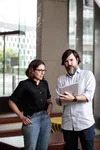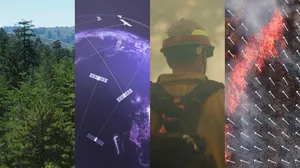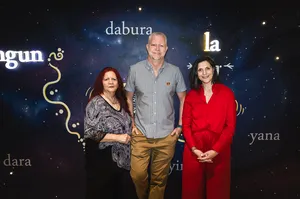Investing in Quantum computing to build a strong digital future

Quantum Mechanics arose in the 1920s as part of an effort by the world's leading physicists to explain observations about our universe that could not be explained by classical physics. A century later, the promise of Quantum Computing rests on that same premise – that we live in a quantum reality that cannot be simulated accurately using traditional computers.
Quantum computers have the potential to better our understanding of how the world behaves on a quantum scale, leading to discoveries that could address problems which have until now, seemed out of our reach.
Quantum Chemistry alone could enable the discovery of new life saving medicines and allow us to better model and predict the impact of atmospheric matter on our climate. The potential of quantum computers goes well beyond simulating physical systems and can speed up solving systems, crack cryptography and enable new applications of machine learning.
New partnerships to propel quantum
Australia has been a pioneer in the field of quantum computing research – earning distinguished recognition in areas such as silicon qubits, optics and quantum computing theory. To help break new ground and ensure that Australian researchers remain at the forefront of this important field, Google Australia announced in 2021 that we’re deepening our investment in quantum computing under the Digital Future Initiative (DFI) – a $1 billion investment in Australian infrastructure, research and partnerships that aims to strengthen local capabilities, support jobs and help build Australia’s digital economy for the future. As part of this overall investment, we have launched Australia’s first ever research hub, Google Research Australia.
Today, we’re delighted to announce we’re expanding our investment in quantum computing research with Macquarie University (MQ) and University of Technology (UTS) – and launching new partnerships with University of Sydney (USYD) and UNSW Sydney (UNSW).
Together with these leading universities, we’re looking to delve deeper into research, make scientific discoveries and prosper homegrown innovation in quantum computing.
Photo of Professor Michael Bremner and Dr. Marika Kieferova at work at UTS (Photo credit: CQC2T)

Australian research to help solve global problems
This collaborative research will help tackle issues of global significance and will span the gamut from Quantum Algorithms and Quantum Hardware research. Teams will look into ways to make quantum computing useful and usable, exploring application fields like sensing, communications and materials science – which have the potential to change how we interact with our world.
Professor Dominic Berry (MQ), for example, is developing algorithms that could be used to design a more efficient process to produce fertilizer – or to design faster charging, longer range batteries for electric cars. Professor Susan Coppersmith (UNSW) is researching properties of materials on an atomic scale. Associate Professor Ivan Kassal (USyd) is developing new quantum algorithms for simulating chemical reactions, to better understand how pollution affects our atmosphere and ecosystems. And Professor Bremner (UTS) is exploring mathematical structures to speed up computation with quantum computers.
We are also building our quantum research team based in Sydney, which includes our newly-appointed quantum computing scientist, Dr. Marika Kieferova, who will help to coordinate these collaborations and represent the Quantum research team locally in Australia. This investment will allow us to explore fundamental questions about the nature of Quantum Computing and help us progress towards scalable quantum computing.
With our partners, we look forward to exploring this exciting new frontier of technology, discover new possibilities and pave the way for a stronger digital future – in Australia and around the world.




